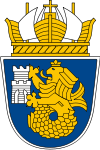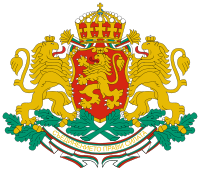Burgas
| Burgas Бургас |
|||
|---|---|---|---|
| — City — | |||
|
|||
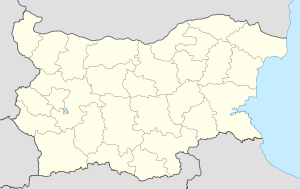 Burgas
|
|||
| Coordinates: | |||
| Country | |||
| Province (Oblast) | Burgas | ||
| Municipality | Burgas | ||
| Government | |||
| - Mayor | Dimitar Nikolov | ||
| Elevation | 30 m (98 ft) | ||
| Population (2007-15-07) | 2,006-15-09 | ||
| - Total | 229,250 | ||
| Time zone | EET (UTC+2) | ||
| - Summer (DST) | EEST (UTC+3) | ||
| Postal Code | 8000 | ||
| Area code(s) | 056 | ||
Burgas (Bulgarian: Бургас, sometimes transliterated as Bourgas) is the second-largest city and seaside resort on the Bulgarian Black Sea Coast with population 210,260. It is also the fourth-largest by population in the country, after Sofia, Plovdiv and Varna. It is the capital of Burgas Province and an important industrial, transport, cultural and tourist centre.
Surrounded by the coastal Burgas Lakes and located at the westernmost point of the Black Sea, the large Burgas Bay, Burgas has the largest and most important Bulgarian port. Today, it is a key economic, cultural and tourist centre of southeastern Bulgaria, with the Burgas Airport serving the resorts of the southern Bulgarian coast.
Contents |
Name
Burgas was founded as an Ancient Greek city under the name Pyrgos (Greek: Πύργος). Its Bulgarian name originates from Pyrgos, through the Latin Burgos/Poros.
Geography
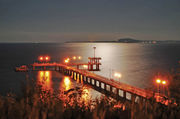

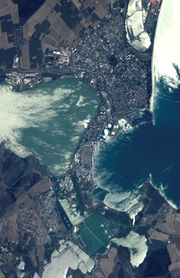
Burgas is situated in the westernmost point of the bay of the same name and in the eastern part of the Burgas plain which is located to the east of the Upper Thracian Plain. Burgas is located at 389 km of Sofia, 272 km of Plovdiv and 350 km of Istanbul. To the east and north the city is surrounded by the Burgas Lakes - Vaya, Atanasovsko and Mandrensko which are home to several hundred bird species. Pan-European corridor 8 passes through the city.[1]
Administrative division
Burgas is divided into the following neighbourhoods:
|
|
|
With a Decision from the Counsel of Minister in 2009 the villages Banevo and Vetren were incorporated to Burgas.
Currently a new city plan is considered which will open the city to the sea and includes several residential neighbourhoods and a new highway junction.
History

Burgas is a successor of the Ancient Greek city of Pyrgos (Greek for "tower"), founded by colonists from Apollonia as a military and observational post against the other important settlement in the region — Mesembria. Besides Pyrgos, the present-day city expands over the area of three other ancient settlements: Castrition, Skafida and Rossokastron.
During the rule of the Ancient Romans, Burgas was known as Debeltum, and was established as a military colony for veterans by Vespasian. In the Middle Ages, a small fortress called Pyrgos was erected on the place and was most probably used as a watchtower. It was only in the 17th century that a settlement named Ahelo-Pirgas grew in the modern area of the city. It was later renamed to Bourgas and had only about 3,000 inhabitants. The city was a township in İslimye sanjak in at first Rumelia Eyalet, after that in the Silistre Province and Edirne Province before the liberation in 1878. It was a department centre in Eastern Rumelia before incorporated in the Principality of Bulgaria in 1885.
Later, it became a major centre on the southern Bulgarian Black Sea Coast and a city of well-developed industry and trade. A number of oil and chemical companies were gradually built. Salt and iron are also mined and traded abroad.
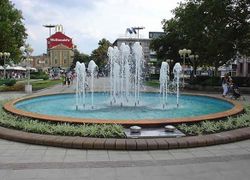
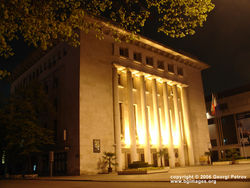
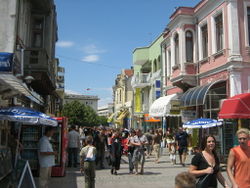
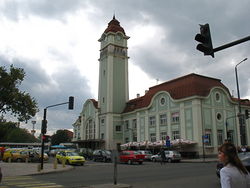
In the early 1800s Burgas was depopulated after raids by kurzdhali bandits. By the mid 19th century it had recovered its economic prominence through the growth of craftsmanship and the export of grain.[2]
In 19th century, with the increasing maritime trade in the Black Sea Burgas became one of the most important port-cities. However, it has lost some of its importance with the shift of the trade between Balkans-Istanbul-Trabzon to Southern port-cities with the construction of Salonica-Istanbul railways. In 1903, the railway station in Burgas opened, giving an additional boost to the city's expansion. Burgas, unlike many other Bulgarian cities, was not much affected by Communist-type urbanization and has kept many of its 19th and early 20th century architecture.
Today the local port is the largest in Bulgaria adding significantly to the regional economy. Burgas also holds annual national exhibitions and international festivals and has a vibrant student population of over 6,000 that add to the city's appeal. The historical society also maintains an open-air museum at Beglik Tash.
Several countries have consulates in Burgas, among them Turkey, Belarus, Romania, Russia and Ukraine.
Burgas Peninsula on Livingston Island in the South Shetland Islands, Antarctica is named after the city of Burgas.


Economy
Burgas is an important industrial center. The most notable industrial enterprise is LUKOIL Neftochim Burgas - the largest oil refinery in South-eastern Europe and the largest manufacturing plant in the Balkans.
Institutions of higher education
Attractions
- Burgas Regional Historical Museum
- Ethnographic Museum
- Museum of Nature and Science
- Art Gallery
- Opera House
- International Folklore Festival
Notable natives
- Apostol Karamitev (1923–1973), actor
- Boris Aprilov (1921-1995), writer
- Dimitar Dimitrov (b. 1959),football coach
- Rousy Chanev (b. 1945), actor
- Georgi Chilikov (b. 1978), footballer
- Georgi Djulgerov (b. 1943), film director
- Georgi Dyulgerov (b. 1980), pop singer
- Georgi Kostadinov (b. 1950), first Bulgarian boxing Olympic champion
- Georgi Kaloyanchev (b. 1925), actor
- Georgi Mihalev (b. 1968), competitive swimmer
- Genko Genkov (b.1924), great artist
- Kostas Varnalis (1884–1974) Greek poet
- Nedyalko Yordanov (b. 1940), writer
- Nikola Stanchev (b. 1930), first Bulgarian Olympic champion
- Petya Dubarova (1962–1979), poetess
- Prodan Gardzhev (1936–2003), Bulgarian Olympic champion - wrestling
- Radostin Kishishev (b. 1974), footballer
- Zlatko Yankov, (b.1966), football player
- Kichka Bodurova,{b.1955},pop singer
- Toncho Rusev,composer and trompet player
- Toni Dimitrova,{b.10.1.1963},pop singer
- Krasimir Gyulmezov-duet Chick,group Domino,{b.10.2.1961},composer,pop singer
- Ani Vurbanova,member of group Studio W and solo pop and jazz singer
- Nedko Troshanov,composer and musician
- Galya Icherenska,member of group Tonika ans solo pop singer
- Georgi Trashliev, Legendary footballer and famous fishmonger
Notable buildings and architectural structures
The building of the TV Centre Burgas ( РРТС Бургас ) looks like a highrise with 6 floors with a tower looking like "Eiffel Tower with concrete legs" on its roof [1].
Twin cities
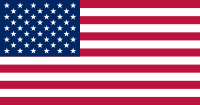 San Francisco, California, United States
San Francisco, California, United States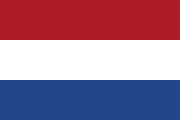 Rotterdam, Netherlands
Rotterdam, Netherlands Yantai, People's Republic of China
Yantai, People's Republic of China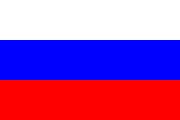 Krasnodar, Russia
Krasnodar, Russia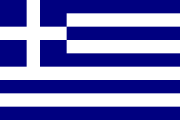 Alexandroupolis, Greece
Alexandroupolis, Greece Miskolc, Hungary
Miskolc, Hungary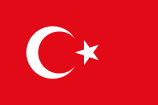 Beşiktaş, Turkey
Beşiktaş, Turkey
See also
- List of cities in Bulgaria
- Bulgarian Black Sea Coast
- Lake Burgas
- Burgas Airport
References
- ↑ Pan-European corridors
- ↑ Burgas, Bulgaria (Eyewitness Travel), Jonathan Bousfield and Matt Willis, Dorling Kindersley Limited, London, England, 2008, p. 210.
External links
- Burgas City Official Website
- Information about Burgas
- Burgas Today.com
- Factor Newspaper, Bourgas news
- Burgas Regional Administration
- Nikola Gruev's gallery of Burgas
- Public transportation in Burgas
|
||||||||||||||||||||||||||||
|
|||||
|
||||||||||||||||||||
|
||||||||||||||
